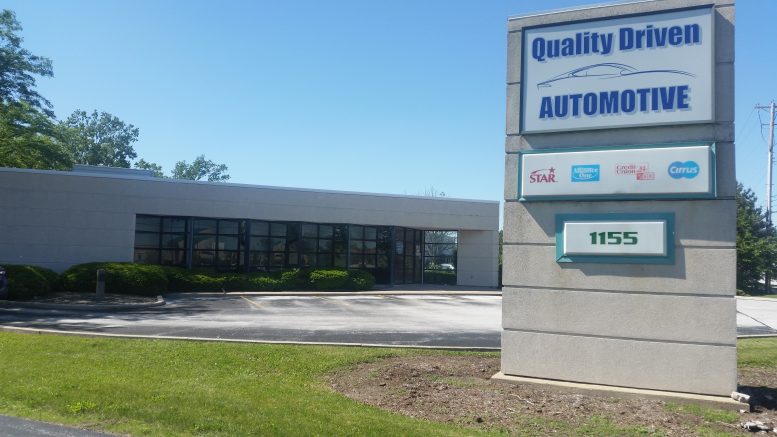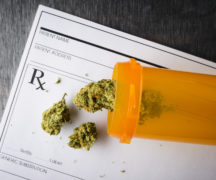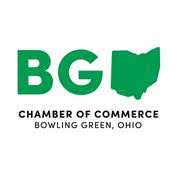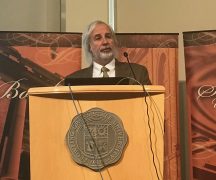By JAN LARSON McLAUGHLIN
BG Independent News
Many Ohioans are still waiting to be able to buy medical marijuana – though 2018 was supposed to be the year when state residents with certain medical needs got full access to the drug.
It appears unlikely that the state will meet that timeline.
However, the delays will pay off in the long run, according to the man opening up the medical marijuana dispensary in Bowling Green.
Mark Jacobs, who will operate the dispensary called Glass City Alternatives on North Main Street, said the state is doing a good job trying to iron out all the kinks in the new medical marijuana program.
That attention to detail should mean smoother operations once the dispensaries are up and running, Jacobs said last week.
“The more regulations now, the more we won’t have to go back later for changes,” he said.
“We are learning it all together,” Jacobs said. “The time up front will be well spent.”
Some dispensaries in Ohio are planning to be in operation in January. Jacobs is planning for mid-March for the Bowling Green site. The location, formerly the Glass City Credit Union Building at 1155 N. Main St., still needs about eight to 10 weeks of construction work, according to Jacobs.
Wood County Chief Building Inspector Mike Rudey said the plans for the medical marijuana dispensary in Bowling Green include controlled entries into the building and a fenced-in area in the back where deliveries will be made. The marijuana product will be stored in the old bank safe in the building, Rudey said.
The medical marijuana provision in Ohio was signed into law by Gov. John Kasich in 2016.
The effort missed its Sept. 8 deadline as growers, processors, testers and dispensary operators got bogged down in regulations. The timetable also lagged for the program’s patient and caregiver registry, which went live earlier this month.
According to the Associated Press, doctors have submitted nearly 4,500 recommendations for the medical marijuana patient and caregiver registry. There is an online portal where certified doctors can recommend patients and caregivers.
One of the final pieces of getting marijuana to patients — the approval of a testing facility — came late last week.
The state is still working with cultivators and processors, Jacobs said.
“That would be problematic,” if the dispensaries opened with no product, he said.
There are no legal cultivators registered in Wood County, Jacobs said. There is one in Lucas County and multiple cultivators in the Cleveland and Columbus areas, where Jacobs may be purchasing from.
“The whole process is kind of fluid,” he said.
Jacobs said he is unsure how much of a demand will be seen at the dispensary in Bowling Green. However, if the other 36 states that already allow medical marijuana are any indication, there will be enough demand to make the local dispensary worthwhile.
“I don’t know why Ohio would be any different,” Jacobs said.
“We’re excited about being in Bowling Green,” he said.
Earlier this year, the State of Ohio Board of Pharmacy awarded 56 medical marijuana provisional dispensary licenses from a total of 376 applications.
The state had been divided into four quadrants for medical marijuana sales – with Northwest Ohio to have 10 dispensaries. The region was broken into districts, with Wood, Hancock and Henry counties being combined into one district to be allowed one dispensary. No applicants filed for locations in Hancock or Henry counties.
So that left Wood County to host a dispensary. The North Main Street location beat out the other applicants, one on Napoleon Road in Bowling Green and the other on Woodville Road in Northwood.
The law requires 500 feet between any marijuana business and a school, church, public library or public playground.
All the applicants were required to show the sites had proper commercial zoning, and that the community had not enacted a moratorium on the sale of medical marijuana.
“When it comes to dispensaries and the way they interact with areas, it’s really up to the local areas. In the end, it’s down to the local town, township or city,” said Grant Miller, of the Ohio Board of Pharmacy. “We are judging them on the merits we required.”
In 2016, Bowling Green City Council considered a moratorium on medical marijuana, but decided against taking such action. The city attorney and city planning director suggested that council declare a moratorium until more definite rules came out from the state. Council was split, but decided to not declare a moratorium on a dispensary.
The North Main Street location is already zoned commercial, according to City Planning Director Heather Sayler.
Doctors must register with the state, which will require completing some type of continuing education about cannabis, before being able to recommend marijuana to patients with whom they have bona fide relationships. A physician is not permitted to recommend medical marijuana use until the physician has obtained a certificate from the State Medical Board of Ohio.
Certified physicians may recommend medical marijuana only for the treatment of a qualifying medical condition. Under Ohio law, all of the following are qualifying medical conditions: AIDS, amyotrophic lateral sclerosis, Alzheimer’s disease, cancer, chronic traumatic encephalopathy, Crohn’s disease, epilepsy or another seizure disorder, fibromyalgia, glaucoma, hepatitis C, inflammatory bowel disease, multiple sclerosis, pain that is either chronic and severe or intractable, Parkinson’s disease, positive status for HIV, post-traumatic stress disorder, sickle cell anemia, spinal cord disease or injury, Tourette’s syndrome, traumatic brain injury, and ulcerative colitis.
Individuals can petition the state medical board to add conditions.
All medical marijuana patients and their caregivers are required to register with the State Board of Pharmacy.
The following forms of medical marijuana will be permitted: oils, tinctures, plant material, edibles and patches. The law prohibits the use of medical marijuana by smoking or combustion, but does allow for vaporization (vaping). The law prohibits any form that is attractive to children.
Currently, Ohio does not recognize medical marijuana registry cards issued in other states. The law requires that the Board of Pharmacy attempt in good faith to negotiate and enter into reciprocity agreements with other states.
For more information about the award process, the board developed the following resources which are now posted to the dispensary page (https://medicalmarijuana.ohio.gov/dispensaries) of the Ohio Medical Marijuana Control Program.
The Ohio Medical Marijuana Control Program Toll-Free Helpline responds to inquiries from patients, caregivers, and health professionals regarding adverse reactions to medical marijuana, and provides information about available services and additional assistance as needed. To contact the line, call 1-833-464-6627.





